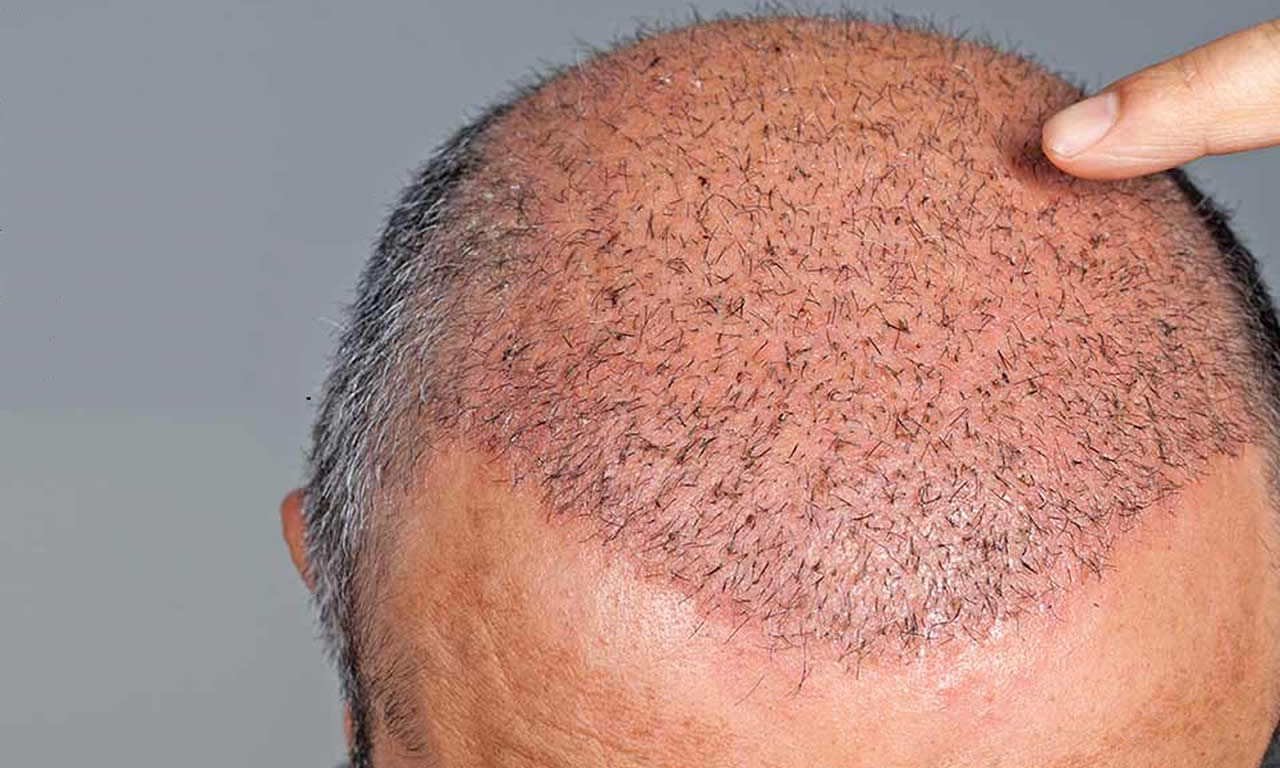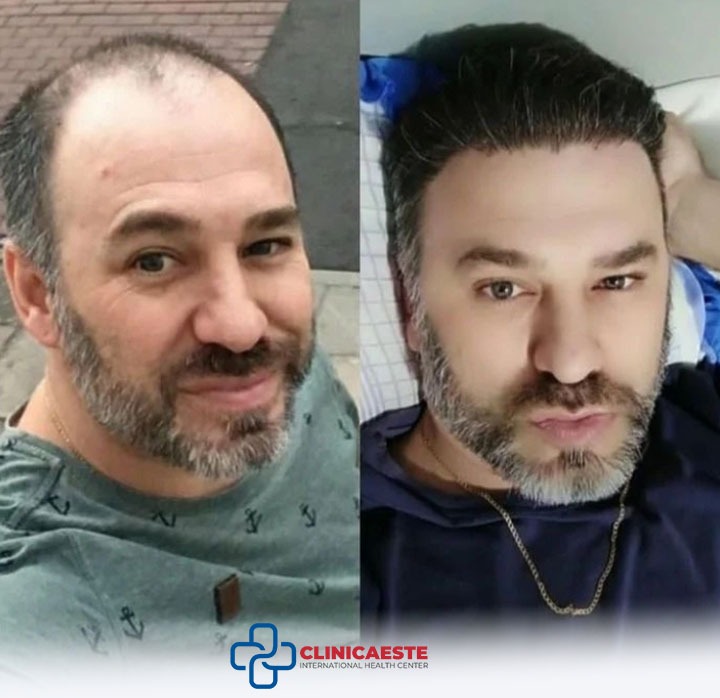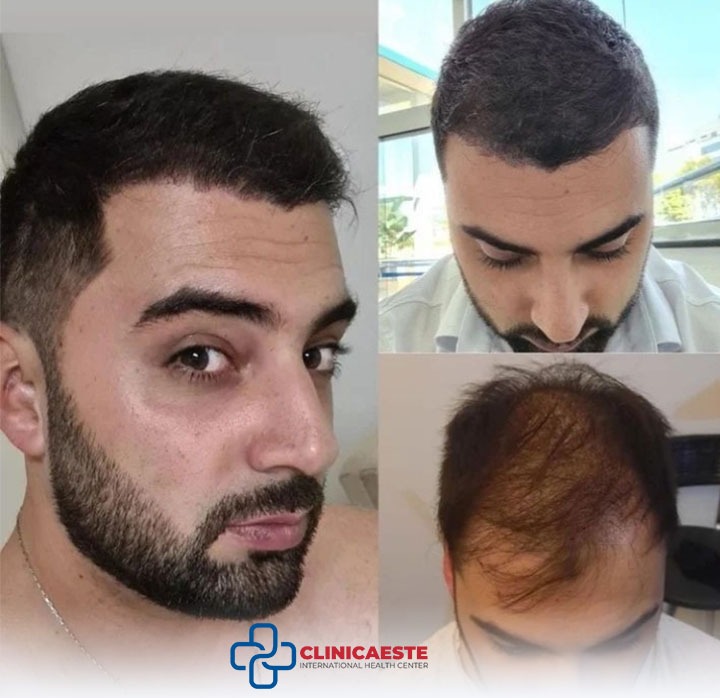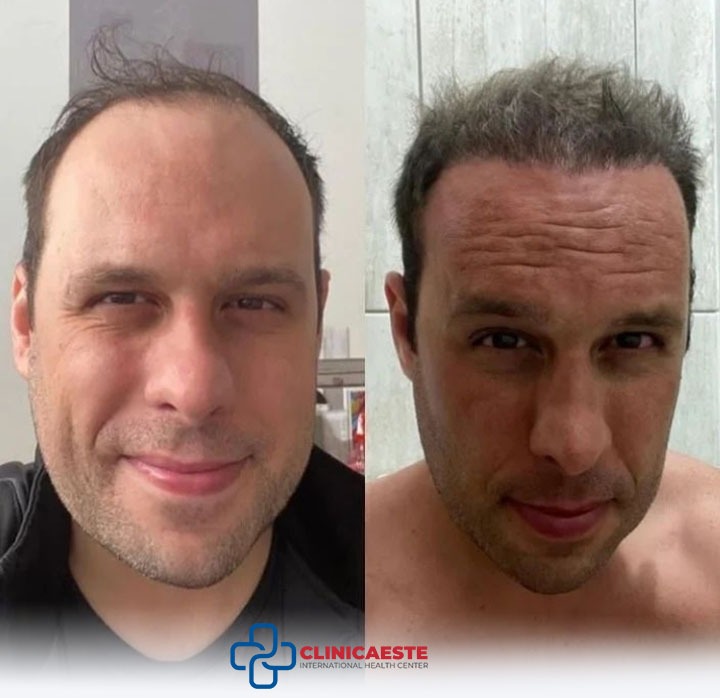FUE Technique

Describe the FUE Technique-Method
For patients who desire a more natural, intense, and undetectable appearance, the FUE Method is a popular hairtran splantation process. The FUE procedure uses microneedles to remove hair follicles from the donor area and transplant them to the desired area. The key component of FUE hair transplantation is transplanting the follicles in the same direction as the growing hair. How is the FUE Method for Hair Transplantation carried out?
FUE hair transplantation is a difficult, careful procedure that involves a small amount of surgery. The healthiest hair location on the human body, the back of the head, is where hair is extracted. If it is done at a high-quality hospital by a knowledgeable team, you can have healthy hair for the rest of your life.
How is Hair Transplantation with FUE Method done?
Hair transplantaiton with FUE technique is a mini-surgical operation which is hard and requires meticulousness. Hair is taken from back of the head which is the most healthy hair area of human body. You can have healthy hair for a life-time if it is done at a high-quality hospital by an expert staff.
Advantages of FUE Technique
Patients who want to retrieve their healthy hair with FUE Hair Transplantation;
No longer hair-loss problems
No massive bleeding
No stitch and cut traces
Shorter than any other method
More intense and natural hair
What is Micro FUE Method ?
In micro FUE technique, hair extraction operation is done by smaller needles. It is more sensitive than normal FUE and it requires a special operation process. Hair Transplantation with Micro FUE is done by experienced and expert doctors with a microscope and minimal equipments.
The biggest advantages of Micro FUE compared to Classic FUE technique are less operational trace and faster recovery.
In which fields FUE method is used?
Normal and Micro FUE can be used in every field which has density issues. Especially can be used in fields, which cover the whole face, such as; hair transplantation, eyebrow transplantation, beard and moustache transplantations. Patient’s condition and expert doctor’s suggestions affect the process.
Professional Hair Transplantation Center with FUE
Clinicaeste presents Professional FUE Technique applications to its patients by expert doctors. If you would like to benefit from our Hair Transplantation with FUE Technique services, visit our center which is located in the heart of İstanbul. You can also benefit from our free-hair analysis service.
Is FUE hair transplant permanent?
Yes, FUE (Follicular Unit Extraction) hair transplant is considered to be a permanent solution for hair loss. During an FUE hair transplant, healthy hair follicles are harvested from the donor area (typically the back or sides of the scalp, where hair is resistant to balding) and transplanted to the recipient area (where hair is thinning or lost). The transplanted hair follicles are usually taken from the permanent zone, which is not affected by the hormone DHT (dihydrotestosterone) that is responsible for androgenic alopecia, the most common type of hair loss.
These transplanted hair follicles retain their genetic resistance to DHT even after transplantation, which means they are expected to continue growing and producing hair in the recipient area for a lifetime. Following the post-operative care instructions provided by the surgeon, maintaining a healthy lifestyle, and managing any underlying causes of hair loss (such as hormonal imbalances, nutritional deficiencies, or other medical conditions) can also help ensure the long-term success and permanency of an FUE hair transplant. Regular follow-up visits with the surgeon and appropriate maintenance treatments, if recommended, may also be necessary to optimize the results and maintain the transplanted hair over time.
Which is better FUE or FUT?
The choice between FUE (Follicular Unit Extraction) and FUT (Follicular Unit Transplantation) as a hair transplant technique depends on various factors, including the patient’s individual characteristics, preferences, and the expertise of the surgeon. Both FUE and FUT have their advantages and limitations, and the suitability of each technique may vary depending on the specific needs and expectations of the patient.
Here are some key differences between FUE and FUT: Harvesting method: FUE involves harvesting individual hair follicles one by one from the donor area using a micro-punch tool, leaving tiny circular scars that are less noticeable. FUT involves removing a strip of scalp from the donor area and then dissecting it into individual follicular units, leaving a linear scar that may be more noticeable.
Scarring: FUE typically results in minimal scarring, with tiny circular scars that are scattered across the donor area and can be easily concealed.
FUT, on the other hand, leaves a linear scar that may require a longer healing time and can be more noticeable, particularly for those who prefer shorter hairstyles.
Healing and recovery: FUE usually involves a faster healing time and less discomfort compared to FUT. FUT may require a longer recovery period due to the need for wound healing from the linear incision.
Donor area preservation: FUE allows for more flexibility in harvesting hair follicles from different areas of the donor area, which may be advantageous for patients with limited donor hair. FUT involves removing a strip of scalp, which may limit the amount of donor hair that can be harvested in subsequent procedures. Transplantation technique: Both FUE and FUT can achieve similar results in terms of hair transplantation. However, the implantation process may differ lightly between the two techniques, with FUE typically involving individual follicle implantation and FUT involving implantation of dissected follicular units.
Suitability for specific cases: FUE may be more suitable for patients who prefer shorter hairstyles, have limited donor hair, or require less extensive hair transplantation.
FUT may be more suitable for patients who require a higher number of grafts and are willing to accept a linear scar in the donor area.
It’s important to note that the choice between FUE and FUT should be made after a thorough evaluation by a qualified and experienced hair transplant surgeon, who can assess the patient’s individual characteristics, needs, and expectations to determine the most appropriate technique for their specific case.
Can transplanted hair fall out after 2 years?
In general, transplanted hair from a hair transplant procedure, whether it’s FUE (Follicular Unit Extraction) or FUT (Follicular Unit Transplantation), is considered to be permanent hair. Once transplanted, the hair follicles typically continue to grow in their new location and are not prone to falling out.
However, it’s important to note that the natural hair growth cycle still applies to transplanted hair. This means that after the initial growth of transplanted hair, which usually starts around 3-4 months after the procedure, there may be a shedding phase where some of the transplanted hair falls out. This is a normal part of the hair growth cycle and is known as “shock loss” or “telogen effluvium.” The shedding is usually temporary and the transplanted hair follicles will start to regrow new hair within a few months. In some cases, a small percentage of transplanted hair may not survive due to various reasons such as poor blood supply, infection, or other factors.
It’s important to consult with a qualified and experienced hair transplant surgeon who can provide personalized information and guidance based on the patient’s specific case and expectations. Following proper post-operative care instructions, maintaining a healthy lifestyle, and regular follow-up appointments with the surgeon can help ensure the best possible outcome and long-term success of the transplanted hair.
Will FUE leave scars?
FUE (Follicular Unit Extraction) is a minimally invasive hair transplant procedure that typically results in minimal scarring compared to older techniques such as FUT (Follicular Unit Transplantation), which involves the removal of a strip of scalp and leaves a linear scar. However, it’s important to note that any surgical procedure can result in some degree of scarring, including FUE. During an FUE procedure, individual hair ollicles are extracted from the donor area of the scalp using a micro-punch tool, leaving tiny circular or dot-like scars that are usually less than 1mm in size. These scars are typically scattered and not noticeable to the naked eye when the hair grows out and covers the donor area. The tiny scars usually heal well over time and tend to fade, becoming less visible as the surrounding hair grows back. The appearance of scars after FUE can also depend on various factors, including the skill and experience of the surgeon, the healing ability of the patient’s skin, and the individual healing process.
Proper post-operative care, such as avoiding activities that may damage the donor area, following the surgeon’s instructions for wound care, and avoiding smoking or other factors that can impair healing, can also play a role in minimizing the risk of visible scarring. It’s important to choose a qualified and experienced hair transplant surgeon who uses modern techniques and follows best practices to minimize scarring and achieve natural-looking results. During a consultation with a hair transplant surgeon, they can assess the patient’s individual case and provide personalized information on the potential risks and benefits, including the likelihood of scarring with FUE.
What happens 10 years after hair transplant?
Hair transplant results can vary from person to person, and the long-term outcome of a hair transplant can depend on various factors, including the patient’s age, hair loss pattern, overall health, and the quality of the donor hair.
However, in general, most patients can expect to enjoy the benefits of a hair transplant for many years after the procedure, including 10 years or more.
Here are some common outcomes that patients may experience 10 years after a hair transplant: Natural-looking hair growth: Hair transplants are typically designed to provide permanent results, as the transplanted hair follicles are taken from areas of the scalp that are resistant to hair loss (usually the back and sides of the head) and are genetically programmed to continue growing. As a result, the transplanted hair should continue to grow in a natural manner, blending in with the patient’s existing hair and creating a natural-looking appearance.
Improved hair density: Hair transplant surgerycan help to restore hair density in areas of the scalp that have thinning or no hair. As the transplanted hair follicles establish themselves and start growing, they can contribute to increased hair density in the treated areas, improving the overall appearance of the hair. Enhanced self-confidence: Hair loss can have a significant impact on a person’s self-confidence and self-esteem.
A successful hair transplant can help to restore a fuller head of hair, which can boost a patient’s self-confidence and improve their overall quality of life.
Minimal maintenance: Transplanted hair is typically permanent and does not require any special maintenance or care beyond regular hair care practices, such as shampooing, conditioning, and styling. This makes it convenient and hassle-free for patients to enjoy the results of their hair transplant without significant ongoing maintenance requirements.
It’s important to note that individual results can vary, and some patients may experience different outcomes or require additional procedures over time to maintain their desired results. Regular follow-up visits with the hair transplant surgeon and following their post-operative care instructions can help to ensure the best possible long-term outcome after a hair transplant.
What are the problems with FUE?
FUE (Follicular Unit Extraction) hair transplant is generally considered a safe and effective procedure with high success rates. However, like any surgical procedure, FUE may have some potential risks and limitations. Here are some of the problems or challenges associated with FUE: Higher cost: FUE hair transplant can be more expensive compared to other hair restoration methods due to the labor-intensive nature of the procedure and the specialized equipment required for follicle extraction. Limited donor hair: The success of FUE largely depends on the availability and quality of the donor hair, which is typically taken from the back and sides of the scalp. If a patient has limited donor hair or has advanced hair loss, it may affect the number of follicles that can be extracted and transplanted, potentially resulting in less coverage or density. Possibility of transection: During the extraction process, there is a risk of damaging or transecting hair follicles, which can affect their survival and growth.
Transection can occur when the surgeon inadvertently cuts the follicles during the extraction process, leading to lower yield and suboptimal results. Healing time: FUE involves multiple small incisions in the donor area, which requires time for healing. Some patients may experience temporary discomfort, swelling, or redness in the donor and recipient areas, which may take several days to weeks to resolve. Potential for scarring: Although FUE is often touted as a minimally invasive technique with minimal scarring, there is still a possibility of small scars in the donor area where the follicles are extracted. However, the scars are typically tiny and well-concealed, and they tend to heal well over time.
Limited graft yield: FUE may yield fewer grafts compared to other hair transplant methods, as the extraction process is more time-consuming and labor-intensive. This may impact the total number of grafts available for transplantation and may require multiple sessions to achieve the desired hair density. Risk of post-operative complications: As with any surgical procedure, there is a risk of post-operative complications, such as infection, bleeding, scarring, or delayed wound healing. However, these risks are generally low when the procedure is performed by a qualified and experienced surgeon in a sterile and controlled environment.
It’s important to consult with a qualified and experienced hair transplant surgeon to thoroughly understand the potential risks, limitations, and benefits of FUE, and to determine if it is a suitable option for your individual case. The surgeon can assess your hair loss pattern, donor hair quality, and other factors to provide personalized recommendations and help you make an informed decision.
In Which Situations Is Fue Hair Transplant Preferred?
FUE (Follicular Unit Extraction) hair transplant is a popular hair restoration method that can be preferred in various situations, including: Early stages of hair loss: FUE is often recommended for patients in the early stages of hair loss when the donor hair supply is relatively abundant and the recipient area requires moderate coverage. It can be an effective option for addressing thinning hair or receding hairline. Desire for minimally invasive procedure: FUE is a minimally invasive hair transplant technique that does not involve a linear incision or sutures, making it less invasive compared to FUT (Follicular Unit Transplantation). It may be preferred by patients who want to avoid a linear scar or have concerns about scarring. Need for limited grafts: FUE is well-suited for cases where a relatively small number of grafts are needed, such as in cases of minor hairline adjustments, scar revision, or eyebrow and beard transplants. FUE allows for precise extraction of individual follicles, which can be helpful for targeted areas. Desire for short recovery time: FUE typically involves minimal downtime and a faster recovery compared to FUT. Patients can often resume their normal activities within a few days after the procedure, making it suitable for those with busy lifestyles or work commitments. Preference for natural-looking results: FUE allows for the extraction of individual hair follicles, which can be transplanted into the recipient area with precision, resulting in natural-looking results. The transplanted hair can blend seamlessly with the existing hair, creating a natural and aesthetically pleasing appearance. Limited donor hair availability: FUE may be preferred in cases where the donor hair supply is limited, such as in patients with limited donor area due to previous surgeries, scarring, or other factors. FUE allows for selective extraction of follicles, which can help optimize the use of available donor hair.
Desire for flexibility in hairstyle: FUE allows for flexibility in hairstyling, as it does not involve a linear scar and allows for extraction from different parts of the scalp. Patients can wear their hair short or long, and have the freedom to style their hair as desired after the healing process. It’s important to note that the choice between FUE and other hair transplant methods depends on various factors, including the patient’s individual needs, hair loss pattern, donor hair availability, and surgeon’s recommendation.
A qualified and experienced hair transplant surgeon can assess the patient’s unique situation and provide personalized recommendations to achieve the best possible outcome.
Fill our Online Consultation form. Our Specialists will contact you as soon as possible to inform you about doctor’s consultation and will answer all of your questions.



